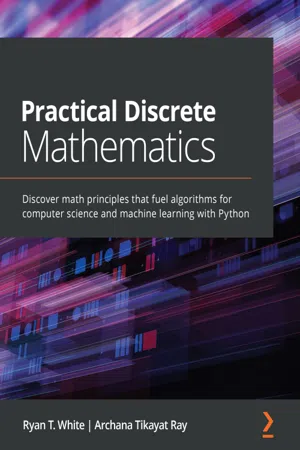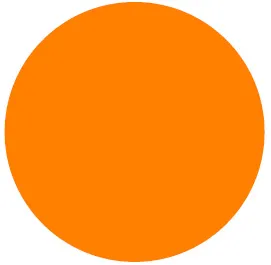
- 330 pages
- English
- ePUB (mobile friendly)
- Available on iOS & Android
Practical Discrete Mathematics
About this book
A practical guide simplifying discrete math for curious minds and demonstrating its application in solving problems related to software development, computer algorithms, and data scienceKey Features• Apply the math of countable objects to practical problems in computer science• Explore modern Python libraries such as scikit-learn, NumPy, and SciPy for performing mathematics• Learn complex statistical and mathematical concepts with the help of hands-on examples and expert guidanceBook DescriptionDiscrete mathematics deals with studying countable, distinct elements, and its principles are widely used in building algorithms for computer science and data science. The knowledge of discrete math concepts will help you understand the algorithms, binary, and general mathematics that sit at the core of data-driven tasks. Practical Discrete Mathematics is a comprehensive introduction for those who are new to the mathematics of countable objects. This book will help you get up to speed with using discrete math principles to take your computer science skills to a more advanced level. As you learn the language of discrete mathematics, you'll also cover methods crucial to studying and describing computer science and machine learning objects and algorithms. The chapters that follow will guide you through how memory and CPUs work. In addition to this, you'll understand how to analyze data for useful patterns, before finally exploring how to apply math concepts in network routing, web searching, and data science. By the end of this book, you'll have a deeper understanding of discrete math and its applications in computer science, and be ready to work on real-world algorithm development and machine learning.What you will learn• Understand the terminology and methods in discrete math and their usage in algorithms and data problems• Use Boolean algebra in formal logic and elementary control structures• Implement combinatorics to measure computational complexity and manage memory allocation• Use random variables, calculate descriptive statistics, and find average-case computational complexity• Solve graph problems involved in routing, pathfinding, and graph searches, such as depth-first search• Perform ML tasks such as data visualization, regression, and dimensionality reductionWho this book is forThis book is for computer scientists looking to expand their knowledge of discrete math, the core topic of their field. University students looking to get hands-on with computer science, mathematics, statistics, engineering, or related disciplines will also find this book useful. Basic Python programming skills and knowledge of elementary real-number algebra are required to get started with this book.
Frequently asked questions
- Essential is ideal for learners and professionals who enjoy exploring a wide range of subjects. Access the Essential Library with 800,000+ trusted titles and best-sellers across business, personal growth, and the humanities. Includes unlimited reading time and Standard Read Aloud voice.
- Complete: Perfect for advanced learners and researchers needing full, unrestricted access. Unlock 1.4M+ books across hundreds of subjects, including academic and specialized titles. The Complete Plan also includes advanced features like Premium Read Aloud and Research Assistant.
Please note we cannot support devices running on iOS 13 and Android 7 or earlier. Learn more about using the app.
Information
Part I – Basic Concepts of Discrete Math
- Chapter 1, Key Concepts, Notation, Set Theory, Relations, and Functions
- Chapter 2, Formal Logic and Constructing Mathematical Proofs
- Chapter 3, Computing with Base-n Numbers
- Chapter 4, Combinatorics Using SciPy
- Chapter 5, Elements of Discrete Probability
Chapter 1: Key Concepts, Notation, Set Theory, Relations, and Functions
- What is discrete mathematics?
- Elementary set theory
- Functions and relations
What is discrete mathematics?


Table of contents
- Practical Discrete Mathematics
- Why subscribe?
- Preface
- Part I – Basic Concepts of Discrete Math
- Chapter 1: Key Concepts, Notation, Set Theory, Relations, and Functions
- Chapter 2: Formal Logic and Constructing Mathematical Proofs
- Chapter 3: Computing with Base-n Numbers
- Chapter 4: Combinatorics Using SciPy
- Chapter 5: Elements of Discrete Probability
- Part II – Implementing Discrete Mathematics in Data and Computer Science
- Chapter 6: Computational Algorithms in Linear Algebra
- Chapter 7: Computational Requirements for Algorithms
- Chapter 8: Storage and Feature Extraction of Graphs, Trees, and Networks
- Chapter 9: Searching Data Structures and Finding Shortest Paths
- Part III – Real-World Applications of Discrete Mathematics
- Chapter 10: Regression Analysis with NumPy and Scikit-Learn
- Chapter 11: Web Searches with PageRank
- Chapter 12: Principal Component Analysis with Scikit-Learn
- Other Books You May Enjoy